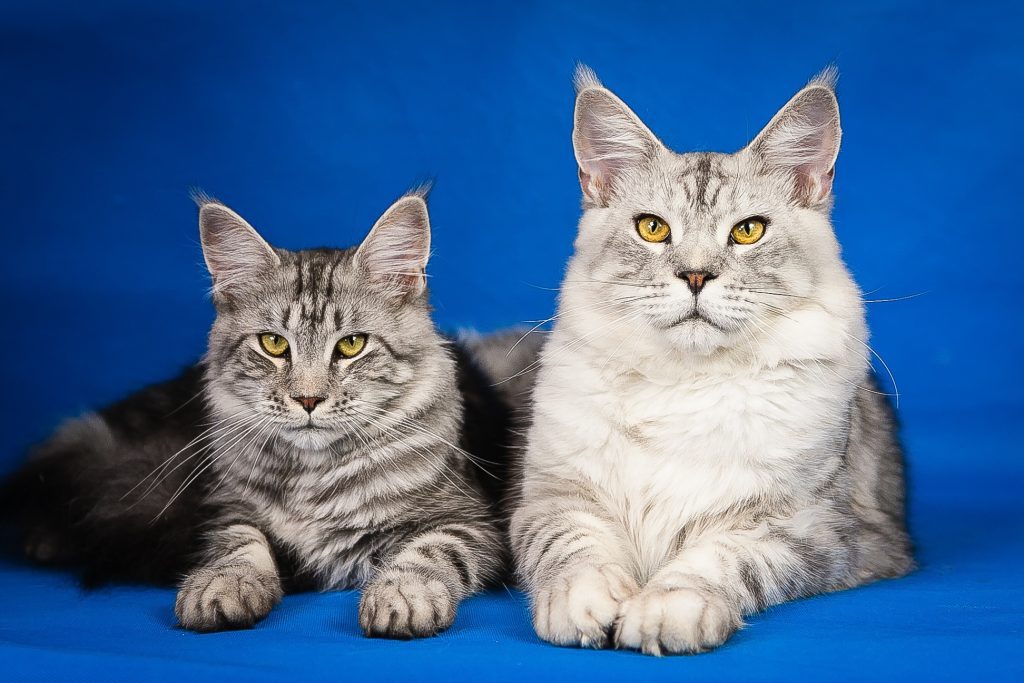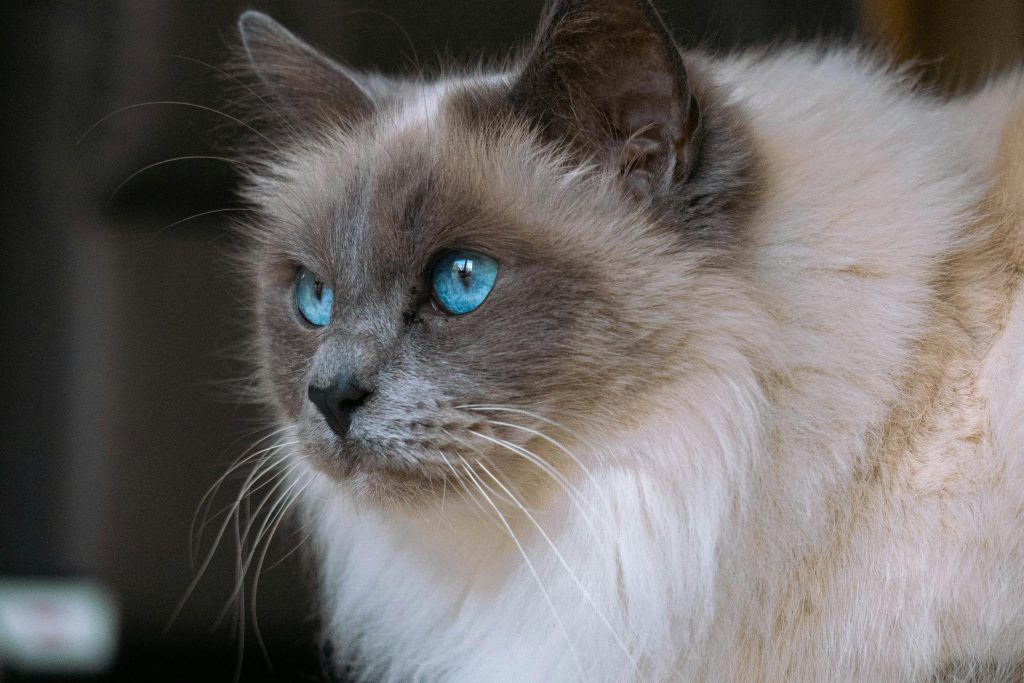Choosing the right Ragdoll breeder affects your kitten’s health, behavior, and lifespan. A pedigree alone doesn’t guarantee a healthy pet, and buying sight-unseen from pet stores or online sellers can lead to heartbreak.
In this guide, you’ll get a practical, step-by-step checklist based on trusted sources like TICA (breeder directories), the UC Davis Veterinary Genetics Laboratory (Ragdoll HCM testing), and ASPCA advice, covering everything from HCM DNA testing to in-person visit checklists. You’ll learn:
- What to ask (health tests, guarantees, socialization).
- What to look for (living conditions, parent cats).
- What to avoid (pressure sales, no contracts).
I’ve seen catteries that set the gold standard and a few that raised red flags — this guide will help you avoid costly mistakes and bring home a healthy, well-adjusted Ragdoll you’ll love for years.
Why Choosing the Right Ragdoll Breeder Matters
The breeder you choose strongly influences your Ragdoll’s health, temperament, and quality of life across its typical 12–15 year lifespan. Most reputable breeders will screen for HCM and PKD (ask to see the test documentation), helping prevent devastating illnesses and costly vet bills.
They also raise kittens in loving, social environments, preserving the Ragdoll’s famously gentle nature. In contrast, kitten mills and careless sellers often skip genetic testing, neglect socialization, and may provide falsified papers.
Key reasons to choose carefully:
- Healthy cats live longer lives through proven DNA testing.
- True temperament comes from proper early handling.
- Lifelong support and a clear, protective contract.
The right breeder isn’t the cheapest — it’s your cat’s lifelong safety net.
You Might Also Like
Step 1 – Verify Breeder Registration & Reputation
Before sending a deposit, confirm your breeder is TICA or CFA registered — it’s your first safeguard against scams. Search their cattery name in the official directory, then cross-check the registration number and location with what the breeder provides. If they can’t or won’t give you a number, step back.
Remember: registration alone doesn’t guarantee ethics — also check reputation—search “[breeder name] + reviews” on Google, Facebook, and forums like TheCatSite. Look for years of steady, positive feedback, not sudden bursts of glowing reviews.
On social media, genuine breeders post real kitten updates and cattery life, not just stock images. If verification feels like pulling teeth, walking away could save you heartbreak and thousands in vet bills.
Step 2 – Evaluate Breeding Standards
A reputable Ragdoll breeder prioritizes traits outlined in their chosen registry’s breed standard — typically a pointed coat, blue eyes, and the overall look recognized by TICA or CFA. Color and pattern recognition can vary by registry, so ask which one they follow and why.
Ethical programs are usually small — often 2–6 queens, each with 1–2 litters a year — allowing for proper socialization and preventing overbreeding. Be cautious of large operations producing frequent litters or promoting “rare” colors without explaining the genetics and health considerations.
Ask for written breeding goals, see pedigrees or show results, and, if possible, tour the cattery. Choosing a standards-driven breeder helps protect your cat’s future health, personality, and predictability. Now that you’ve verified registration, it’s time to check what health testing the breeder actually provides.
Step 3 – Prioritize Health Testing & Veterinary Care
A good Ragdoll breeder doesn’t just say “health tested” — they show you proof. Ask for DNA test results for both parents covering HCM (including the Ragdoll-specific R820W mutation), PKD, and negative FeLV/FIV status.
Reports should be recent and from trusted labs like UC Davis Veterinary Genetics Laboratory or Optimal Selection, with the cat’s registered name, sample date, and a clear lab header. Ethical breeders also provide vet-issued vaccination and deworming records, a current health certificate, and details on early spay/neuter to prevent backyard breeding.
Avoid anyone unwilling to share unedited reports or who only tests one parent — health transparency is your best protection against future heartbreak.
You Might Also Like
Step 4 – Assess Kitten Rearing Environment
A Ragdoll’s temperament is shaped as much by its environment as its genetics. Ethical breeders raise kittens cage-free in enriched, family spaces, with gentle daily handling starting around 2 weeks (the key 2–7 week socialization window) and continuing through 12 weeks. They’re exposed to household sounds, varied people, and different textures.
The space should feel like a lived-in family room — sunlight, toys, scratching posts — not a storage closet. Smell should be neutral, not heavy with disinfectant or waste.
Look for clean bowls, fresh litter, climbing trees, and relaxed mothers. Watch the kittens for a few minutes: curious and approachable is ideal; fearful or hunched is a warning sign.
Step 5 – Understand Contracts & Guarantees
A breeder’s contract isn’t just paperwork — it’s your kitten’s safety net. Look for a written health guarantee (ideally 2–3 years) that specifies which genetic conditions are covered, how claims work, and what proof is required (usually a licensed vet’s written diagnosis, sometimes with a second opinion).
A solid contract also spells out return/rehome terms, spay/neuter timelines, no-declaw clauses (where legal), and when registration papers will be transferred. Good breeders offer lifetime support and will take the cat back at any stage.
Request the contract before paying a deposit, read every clause carefully, and ask for plain-language answers — if it’s not in writing, it doesn’t exist.
Step 6 – Ask the Right Questions
Interviewing a breeder isn’t small talk — it’s your chance to protect your kitten’s future. Thoughtful, specific questions reveal far more than polite conversation. Keep your tone friendly but firm, jot down notes, and confirm answers in writing.
Top questions to ask:
- Are both parents’ DNA tested for HCM (R820W) and PKD? Can I see the reports?
- How many litters does each queen have per year?
- May I visit the kittens and parents in person or via live video?
- Do you sell through pet stores or online marketplaces?
- What vaccinations and deworming have kittens received? Can I see vet records?
- What’s your contract and health guarantee? Can you send a copy?
- Can you provide references from recent buyers and your veterinarian?
- How do you socialize kittens, and at what age do you rehome them?
- Do you have pedigrees for this litter?
- What kind of support do you offer after adoption?
Open, clear answers with proof are a green flag. Evasion or vagueness? Walk away.
Step 7 – Recognize Red Flags
A charming breeder and cute photos aren’t enough — unethical practices often hide in plain sight. Watch for no registration, refusal to show paperwork, excessive litters, or denied home/virtual visits. Payment-only by wire or crypto, stock photos instead of live videos, or refusing to share vet contact are equally concerning.
Be alert for pressure lines like, “This kitten won’t last — pay now or lose it.” That’s not urgency, it’s manipulation. If you spot these, pause, verify, and walk away if needed — a well-raised Ragdoll is worth the wait. Reputable breeders are transparent, patient, and proud to prove their standards.
Step 8 – Pricing & Ethical Considerations
Understanding Ragdoll kitten prices means looking beyond the sticker—ethical breeders invest heavily in genetic testing (HCM, PKD), vaccinations, quality nutrition, and socialization. This care drives prices typically higher than bargain offers.
Ragdoll prices vary by region, but pet-quality kittens often sit within a common market range, while show-quality can run higher. Prices far below local averages usually signal cut corners or health risks. To make a smart choice, compare at least five local listings, ask breeders exactly what their fee covers, and look for full transparency.
Remember, paying more upfront often saves you from costly vet bills and heartbreak later, much like investing in a reliable car; quality costs, but it protects your long-term happiness.
You Might Also Like
Step 9 – Local vs. Long-Distance Breeders
Choosing between a local or long-distance Ragdoll breeder depends on balancing trust, convenience, and your kitten’s well-being.
Local breeders make it easier to build a personal connection and maintain ongoing support, while long-distance breeders can offer access to rare colors and broader genetics, especially if you can’t find what you want nearby.
For remote purchases, ask for video tours, health paperwork, and references, require a vet health certificate dated within 7–10 days of shipping, and use a recognized pet transport service—never accept informal handoffs. With today’s tech and transparency, buying far away can be safe—just do your homework and never skip due diligence.
Step 10 – Adoption as an Alternative
Considering adoption is a wonderful way to bring a Ragdoll into your life while supporting ethical practices. Many breed-specific rescues and shelters offer purebred or mixed Ragdolls, including retired breeders needing loving homes.
Unlike buying, adoption often involves lower costs, transparent health histories, and thorough matching processes to ensure a good fit. Many adopters even find rescues provide more personality history than breeders, making the transition smoother.
To start, check reputable Ragdoll rescues such as Floppycats™’ rescue list or ragdoll.rescueme.org, along with national databases like Petfinder.
Prepare for applications, home checks, and detailed health and behavior discussions. Adoption not only gives cats a second chance but also helps reduce demand for irresponsible breeding.
Final Thoughts
Choosing the right Ragdoll breeder takes patience, research, and attention to detail—but it’s worth every effort.
Remember these key steps: verify breeder registration and reputation, visit or request transparent tours, ask detailed questions, watch for red flags, consider pricing fairly, and weigh local versus long-distance options.
Trust builds over time, and a reputable breeder offers not just a kitten but lifelong support. If you’d like a printable checklist of these steps (plus the top questions to ask), download it here. And if you’ve been through the process yourself, share your story in the comments—I read and feature the most helpful ones.
You Might Also Like

Hi, I’m Abir Ahamed—a writer, editor, and proud cat lover with a passion for feline welfare. I use my words to educate, inspire, and advocate for responsible pet care. Based in Bangladesh, I bring a unique perspective to Cats Question, hoping to help cat lovers make informed, compassionate choices.






